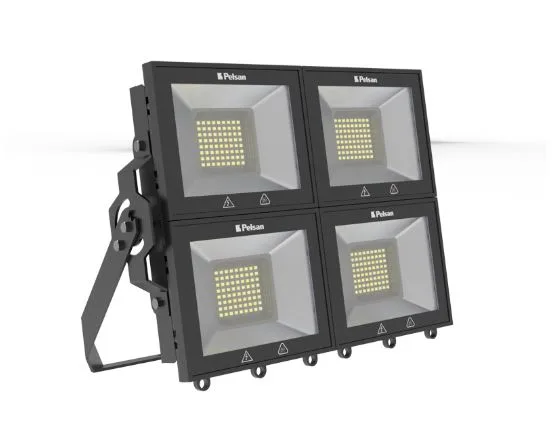Security Considerations for Modern 5G Deployments
5G networks have completely changed our daily communication. Whether we’re talking about companies or private users, this technology provides ultra-low latency coupled with high data speed. On top of that, you can connect thousands of machines in a single network, which makes it perfect for IoT devices.
Unfortunately, despite all of its advantages, 5G brings a completely new set of security challenges. Both businesses and cybersecurity companies have to adjust to the tech, preventing the most common exploits.
In this article, we will talk about all the security changes that came with modern networks. After that, we will also go through the best practices for your 5G core solution.
What Has Changed With 5G?
The funny thing is that most people don’t understand the technological leap humanity has made by introducing 5G. Unlike legacy networks, this new form of telecommunication brings numerous benefits in terms of speed and connectivity. As expected, this has brought about some major changes in how networks are created and operated:
- Decentralization: Unlike the past network generations, 5G has completely changed its architecture through distributed edge computing. As computing resources are now closer to devices, we can reduce latency vital for smart machines.
-
- Massive Connectivity: Besides decentralization, massive connectivity is another thing that allowed us the use of IoT tech. You can now introduce thousands of devices into a single network, causing headaches to cybersecurity experts worldwide.
- Virtualization: Running a private business network is much easier nowadays. Instead of building your private servers, you can rely on affordable, easy-to-maintain cloud solutions.
- Network Slicing: Companies can now create containers for different purposes. Through slicing, you can split different company processes simultaneously reducing the impact of potential security breaches.
The biggest difference between 5G and legacy networks is that cybersecurity teams are now forced to safeguard networks from the earliest days. They must be present during design and deployment, all the way to operations.
4 Biggest Security Considerations for 5G
To minimize potential threats, companies have to pay close attention to numerous network layers:
-
RAN
RAN is vital for 5G network connectivity as it links devices and infrastructure. The protection of the Radio Access Network is vital for your operations as it prevents wireless and physical threats. Most notably, you have to make sure base stations are insulated against tampering by introducing access controls, boot mechanisms, and intrusion detection.
The biggest advancement we’ve made over the years is introducing complex authentication measures that would prevent unauthorized access. Furthermore, cybersecurity teams have to mitigate advanced attacks such as jamming and spoofing. To achieve these goals, experts use spectrum analysis, real-time monitoring, and other measures.
-
Core Network
The 5G core network is the central part of 5G, responsible for authentication, data flow orchestration, and service delivery. To protect the infrastructure, cybersecurity teams employ Zero Trust solutions, applying the same scrutiny to each person attempting to access the network.
Through Zero Truth methodology, the network is able to authorize, authenticate, and validate each interaction. It relies on granular access controls and identity verification to sift through users. By implementing this measure, we can effectively hinder attackers during lateral movement, ensuring they can’t gain access to the entire network by compromising a single component.
-
Cloud and Edge
Cloud and edge infrastructure are critical for reducing latency and delivering computer power closer to the user. Most notably, the technology allows companies to scale their operations without increasing costs. Edge enables us to create containerized microservices, suitable for different tasks and environments.
Another great benefit of containers is that they mitigate common security threats. As each function is separated from the rest, a single breach won’t jeopardize all of your data. Nevertheless, each slice requires strong isolation to ensure each workload is within its designated environment.
-
User Devices
User devices and equipment are the most vulnerable part of the 5G networks. By losing your phone or leaving a password in an unprotected spot, you can jeopardize the entire company’s network. What’s worse, each one of us has dozens of IoT devices in their home, many of which they use for their job.
Through device attestation, we’re now able to verify each device and its location. Networks pick up on anything unusual and ban access, which is the first line of defense. By relying on two-way authentication, we get an additional security layer, as an attacker has to jump through several hoops until they finally gain access to data.
Best Practices for Securing 5G Networks
Besides using the most sophisticated technology, companies can implement different practices to minimize cybersecurity risks:
- Introduce DevSecOps Solutions: It is vital that you integrate advanced security measures throughout the network lifecycle, from the design phases. Your team should use a combination of code analysis, testing, and compliance checks. Furthermore, managers should encourage teams to cooperate with each other and share data when necessary.
- Monitor Operations Daily: Your cybersecurity teams should introduce telemetry, analytics, and logs to increase visibility across infrastructure. Artificial intelligence and machine learning, in particular, are vital for identifying any suspicious behavior and blocking access.
- Conduct Threat Modeling: IT experts should proactively seek out vulnerabilities within a network. They should analyze attack vectors across core, edge, RAN, and endpoints. By creating attack simulations, cybersecurity teams can assess network defenses and their effectiveness.
- Invest in Your Workforce: A lot of cybersecurity risks can be mitigated by simply having a better-educated workforce. It’s vital that you team with your staff about the network basics and how to best secure their devices. These workshops can even build practical skills, allowing your staff to execute basic cybersecurity processes.
Enhancing Your Security the Right Way
Responsible cybersecurity teams should introduce various proactive measures to safeguard company data. The good news is that 5G technology is so advanced, relying on AI and ML, that it can effectively counter even the most significant threats. Pay attention to the previously mentioned best practices, as they can make a difference for your cybersecurity.




